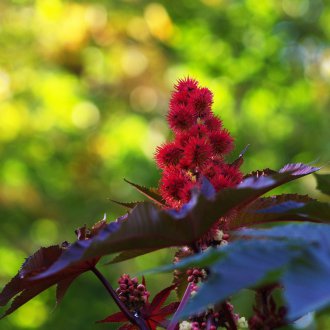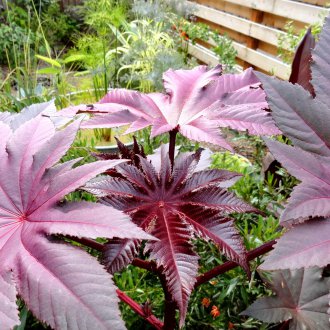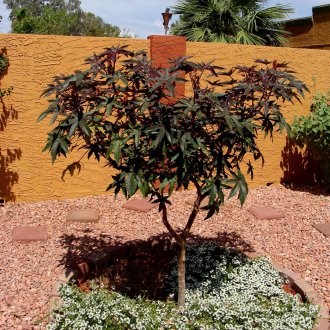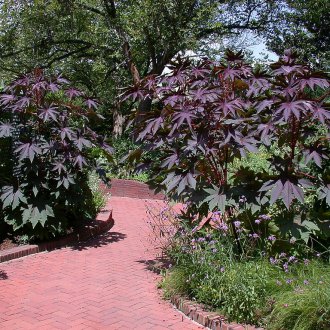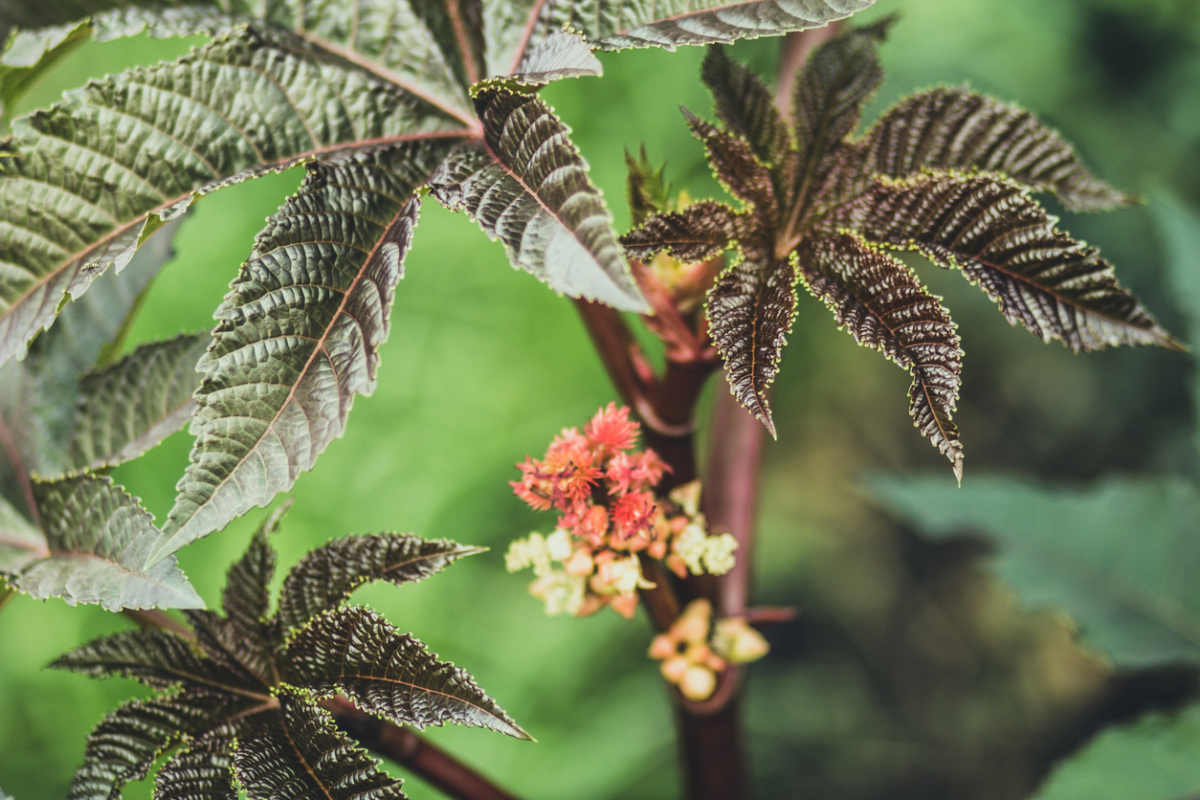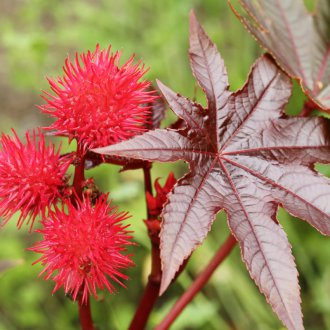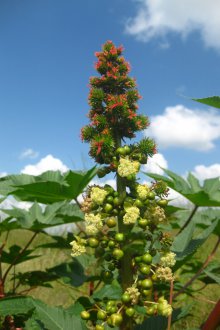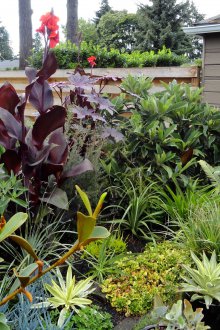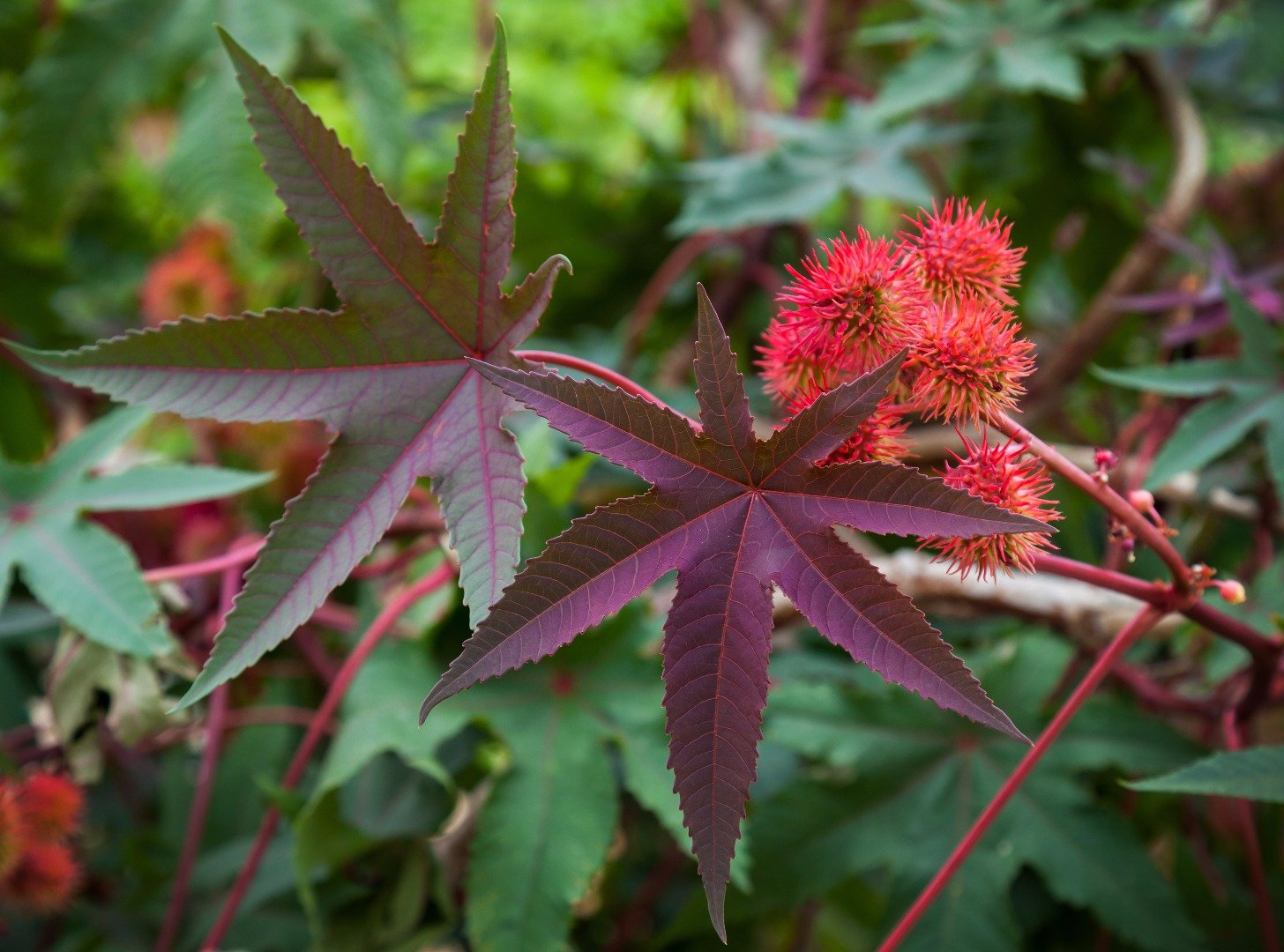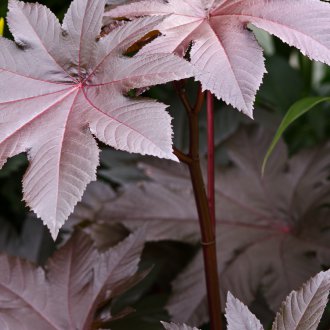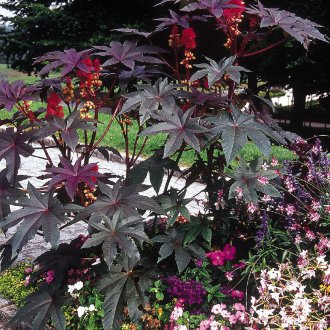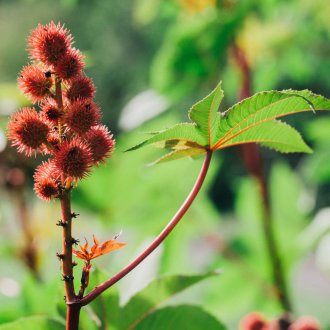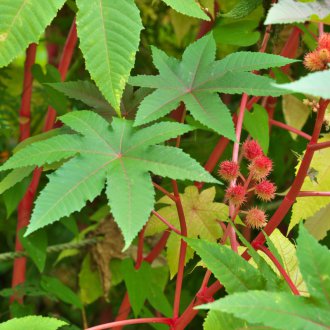Castor oil plant in the garden: how to grow an evergreen plant (23 photos)
Content
The attention of many lovers of exotic plants attracts an unusual southern culture with large, bright leaves, shaped like a palm tree. This is castor oil, planting and growing which does not require much effort and time.
Characteristics and characteristics of the plant
Castor oil plant (second name castor) is an annual, poisonous plant of the family Euphorbiaceae. Africa is considered her homeland. In a subtropical and tropical climate, castor oil is grown as an evergreen perennial.
Outwardly, the castor oil plant resembles a tropical palm tree up to 3 m high. The stems inside are hollow, branched, arranged vertically. The color is pink-red or purple with a slight bluish bloom.
Castor leaves are deep-cut, unequally serrated, sometimes pointed. Color from green to burgundy. The leaf length can reach 80 cm, together with the petiole - more than a meter.
In the summer, castor inflorescences appear in the form of brushes green with a red tint. Male and female flowers are on the same plant: female - in the upper part of the inflorescences, and male - in the lower.
Later, fruits appear in place of the flowers. They are round or elongated seed capsules, can be smooth or with thorns. Each box contains 2-3 seeds that look like beans.
To collect seeds, in early September, the largest and most beautiful boxes are cut. Then it is dried at home in a well-ventilated room, and in November-December seeds are extracted from them. On an industrial scale, castor (castor, castor, racine) oil is produced from seeds.
Castor oil plant is often grown in gardens for decoration, but despite the attractive appearance, some gardeners are wary of planting it in a garden. The root, trunk, leaves and seeds of this plant contain poisonous to humans and animals protein - ricin. Its ingestion causes irreparable harm to health, can lead to death. The highest concentration of ricin in the seeds of a plant. If they accidentally enter the body, it is necessary to rinse the stomach and consult a doctor.
Varieties and types
For central Russia, castor oil is an exotic decorative culture. Starting from the 19th century. these grassy plants for open ground are actively used in landscaping.
Long-term work of breeders allowed to obtain many varieties that differ in size, color and shape of the leaves. Today, several varieties of castor oil are popular:
- Bourbon. A tree-like plant, whose height reaches 3 m. It differs in the red color of the trunk and large glossy leaves.
- Cossack. Decorative variety of domestic selection. The height of the plant is up to 2 m. The stem is red-brown, the leaves change color from purple-red to dark green with red veins as they grow older. Flowers are collected in brushes of saturated red color.
- Zanzibar Spreading plant up to 3 m high. It has large green leaves with white veins. The flowers are blood red.
- Indian (or Cambodian). A plant with dark green foliage and an almost black trunk.The average height does not exceed 1.2 m.
- Impala A plant with bronze leaves and red flowers. Height does not exceed 1.3 m.
Despite the external differences, all varieties belong to the same type of "castor oil plant".
Properties and application of castor oil
Castor oil is known all over the world not only as poisonous, but also as a valuable industrial and medicinal crop. The healing properties of castor oil extracted from castor oil seeds were known in antiquity. It is still used:
- as a laxative and diuretic;
- in the treatment of chronic inflammation of the gastrointestinal tract;
- to neutralize toxins in case of poisoning (except for alcohol intoxication);
- if necessary, stimulation of labor;
- in the treatment of skin diseases (applied topically);
- as a basis for the manufacture of ointments and emulsions.
The beneficial properties of castor oil are widely used in home cosmetology. It is part of masks and lotions for hair and facial skin.
Castor oil should be used with great care, strictly following the instructions for use. Treatment with castor oil is contraindicated:
- in case of intestinal obstruction (mechanical nature);
- pregnant and lactating women;
- children under 12 years old;
- with exacerbation of any chronic disease;
- people with individual intolerance.
In addition to medicinal, castor oil has other beneficial properties. It does not freeze and does not dry out. On its basis, lubricants are produced for use in aviation, used in paint and varnish production and soap making.
Castor oil is not limited to castor oil production. Recycled cake is used to make glue and nitrogen fertilizers.
Growing
Growing seedlings
Growing castor oil starts with planting seeds on seedlings in late March - early April.
To ensure better germination of seedlings, the seeds must be prepared, their scarification should be carried out - partially destroy the solid waterproof shell. You can do without scarification. To do this, you need to soak the seeds for a day in clean warm water or a solution of a growth stimulator.
Castor oil plant does not tolerate transplantation, so sowing seeds for seedlings is best done in peat pots. Since the shoots are quite large and grow quickly, the pots for planting should be of the appropriate size. Soil can be bought ready-made or prepared independently by mixing an equal amount of peat, garden soil, sand and humus.
Castor bean planted 2-3 seeds in each container, deepening by 2-4 cm. The soil should be slightly moist. After planting, the seeds are watered abundantly.
Capacities with future sprouts must be put in a warm, well-lit place in the house. Moisture in peat containers evaporates quickly, so you need to make sure that the plant does not dry out. Once every 2 weeks, castor oil seedlings need fertilizing with mineral fertilizers.
The first shoots usually appear after 3-6 days. When they grow a little, they leave one sprout in each pot, the rest are carefully removed.
If the climatic conditions of the region allow, the seeds can be sown directly in open ground. For this, the air temperature at night should not fall below 12-15 ° C.
Outdoor landing
Castor oil planted on a permanent place in the open ground in late May - early June, when the threat of night frosts will pass and warm weather will set. Like other herbaceous plants for open ground, castor oil does not tolerate freezing and prolonged cooling.
Castor oil grows well in an open, sunny area with loose and moist soil. Sometimes, in order to protect from drafts, it is planted near the fence or at the south wall of the house.
If the land on the site is heavy, then for planting an exotic plant you need to prepare it: add sand, humus, peat. Then dig as deep as possible.
Planting a seedling in open ground is as follows:
- In accordance with the magnitude of the root, a well is prepared.
- Sprouts are planted in peat containers, which subsequently decompose in the soil or together with a root lump of earth.
- At 2-3 cm the seedling stalk is buried in the ground and sprinkled with earth.
- Abundantly watered. To prevent water from spreading, a small roller should be poured around the hole.
- When water is absorbed, the soil in the hole can be mulled with peat.
When planting in open ground, it is important to maintain the integrity of the root system of plants.
Care Features
Planting and caring for castor oil is not difficult even for novice gardeners.
When a plant is planted in open ground, only:
- Water at least once every 5 days for 10 liters under a bush.
- Weed and loosen the flower beds. To provide oxygen access to the root system.
- Feed at least 1 time in 2 weeks. Use liquid fertilizers for this, alternating mineral and organic.
- Set the support near a young plant until it is strong. In order not to spoil the look with props, castor oil is sometimes planted near mesh fences. It goes well with climbing cultures.
For proper care, castor oil must be treated with special preparations. They protect it from damage by fungal diseases and harmful insects, which affect all types of herbaceous plants for open ground.
Landscape design
Landscaping experts highly value castor oil for its exotic appearance and rapid growth. It is planted in the garden as a single plantation or in a flower bed along with other ornamental plants.
Castor oil is attributed the ability to deter flies and other insects, so it is often planted near a gazebo or at home.
Planting castor oil plant along the fence, you can quickly grow a beautiful hedge that does not need complicated care, constant pruning and shaping. In the design of the garden, this exotic plant is used to divide its territory into different zones.
On the flower beds, castor oil plants are placed in the background, so it does not cover other plants. Such annual herbaceous plants for open ground go well with castor oil plant as marigolds, nasturtium, petunia, clematis, sweet peas. Among perennials, the castor is beautifully complemented: monards, lilies, hosta, gerbera.
Castor oil can be grown in large pots on the open veranda of the house. Bringing it into the room in the autumn-winter period, it will turn from a seasonal plant into a perennial, indoor flower.
Castor-oil plant - a decorative, grassy plant for open ground, capable of decorating any personal plot. No need to be afraid of the poison contained in it. Working with seeds in gloves, observing basic precautions, growing castor oil plants is no more dangerous than other grassy crops.
